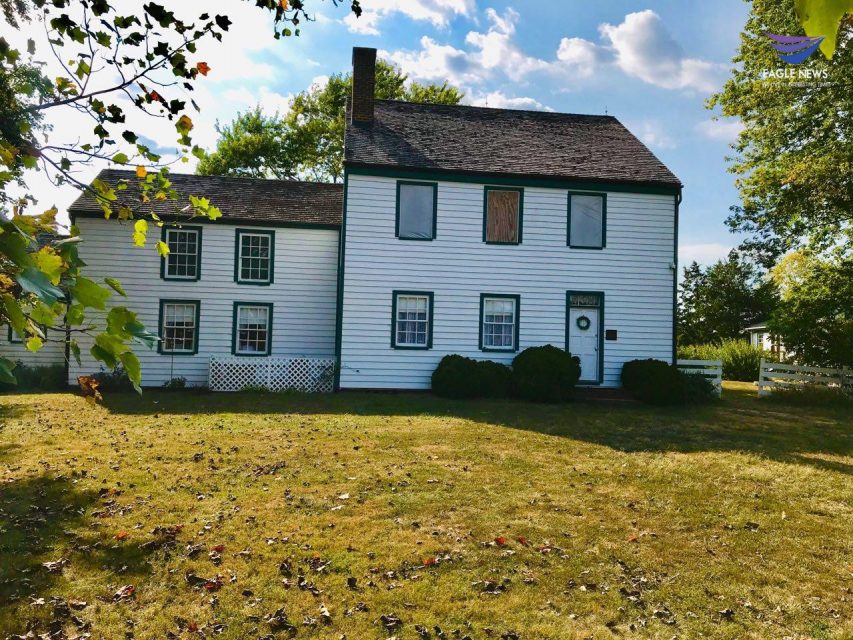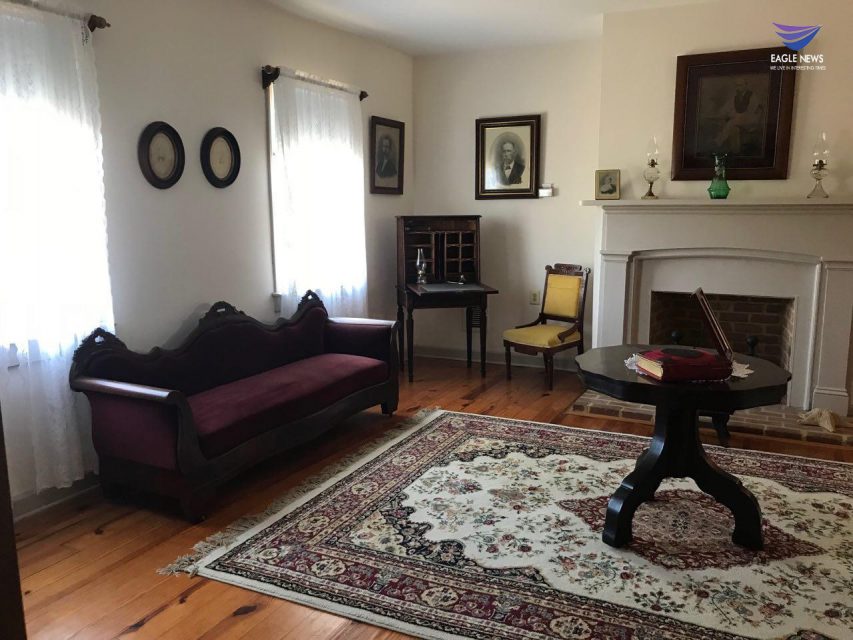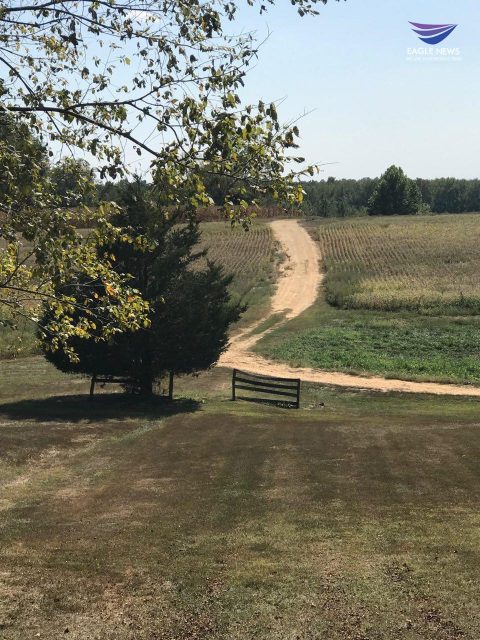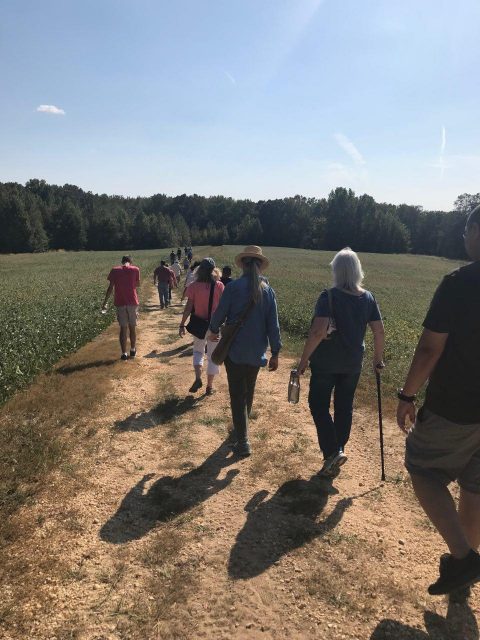
By Chay Masagca
EBC Washington D.C. Bureau
WALDORF, MD (Eagle News) — A two-story mid-19th century Victorian white farmhouse that sits in Waldorf seems like nothing out of the ordinary, yet it continues to draw visitors from all over to this southern part of Maryland. People are drawn to this place because of their desire to see in person and to know more about the house where John Wilkes Booth, the infamous assassin of President Abraham Lincoln, stayed prior to his escape into Virginia. This house, which is now a museum, is the house of Dr. Samuel A. Mudd or the Mudd House.
Standing on about a 200-acre farmland and about one-fourth miles from the road, the Mudd House was originally built in 1857 as a wedding present to Dr. Samuel A. Mudd and his wife, Sarah Frances Dyer. The couple comfortably settled and raised their own family here.
On April 15, 1865, everything changed when two men knocked on Dr. Mudd’s door at around four o’clock in the morning. The two men, John Wilkes Booth and his companion, David Herold, sought Dr. Mudd’s medical assistance.
Booth, an actor, had just assassinated Abraham Lincoln, the sixteenth president of United States, at Ford’s Theater in Washington, D.C. a day earlier on April 14, 1865. He suffered a fractured leg as he fled the theater.
Booth and Herold stayed at the Mudd house for several hours, leaving the property later that afternoon. The assassin and his accomplice traveled south into Virginia where Federal soldiers eventually caught up with them 12 days later on April 26 . Herold surrendered but Booth, however, was fatally shot.
Development into a museum
Indeed, these events that unfolded more than a hundred years ago at the Mudd property, which led to the trial and conviction of Dr. Mudd and other conspirators, spawned countless accounts of historians and warranted the house’s designation as a historic site.
Donna Peterson, Head Docent of the museum, shared that even in the 1920s, decades after the death of Dr. Mudd and years after his wife’s passing, the Mudd house continued to spark the public’s interest. People would knock on the door longing to see the house where it all happened.
Years later, Louise Mudd Arehart, the 32nd grandchild of Dr. Mudd who was born and raised in the same house, felt the need to open it to the public and turn it into a museum.
Arehart’s group gave the house the needed shot in the arm. setting in motion its restoration. Arehart started the renovation in the 1960s.
“Louise started putting it together and started the renovation to make it look like a house in 1865 again because the family made improvements over the years and that changed the look of the house,” said Peterson, who had been working as a volunteer in the Museum for 23 years now.
The restoration of the Mudd house, however, required the replacement of its lath board and plaster so that electricity could run and heating and air-conditioning systems could be installed. The downstairs flooring needed also to be replaced because of termite damage.
Arehart developed the plan for the house and gathered original family pieces and donated items from the period of 1859 to 1911, the time when Mrs. Mudd lived in the house. Some items gathered and on display now at the Musuem include the couch where Booth laid while Dr. Mudd examined his leg, items made by Dr. Mudd while in prison, and chest drawers and doll furniture made by co-conspirator Edman “Ned” Spangler, who lived at Dr. Mudd’s farmland upon release from prison. It is said that approximately ninety percent of the items on display in the Museum are original family heirloom.
“People are impressed by the original things and artifacts in the house. I think they are impressed that we still have the 200- acre land and the house is still intact,” Peterson said.
Arehart founded the Dr. Samuel A. Mudd House Museum and opened it to the public in the seventies. She initially ran it with the help of her relatives. Although at present it has about 30 volunteers, there is still in great need for more, especially docents, to help at least once a month.
The docents of the Museum are dressed in period costumes and guide tourists in exploring the house while recounting in detail the events to paint a vivid picture of what happened that fateful day.
What is the motivation for their service?
“Love of history,” Peterson answered.
The museum founders and staff are historians at their core and with their vast knowledge on Lincoln’s assassination, Booth’s escape and the life of Dr. Mudd they strive to educate the public about this piece of American history. Peterson, trained by Arehart as a docent in 1996, took to heart every story told and written on the subject for accuracy in its retelling.
Private donors, including family and friends of the Mudds, helped finance the restoration of the house into the Museum that it is today. Now, income from the gift shop operated at the rear of the house and admission fees are used to preserve the early Victorian state of the house and to keep in good condition the 200- acre farmland where the trail trekked by Booth and his companion to escape is also found. The trail is part of the “Booth Escape Route.”
Only a 20-minute drive from the city proper of Waldorf, the Mudd House stands imposing in its own right. Together with the Exhibit Building and other outbuildings on the farmland, “it is considered the most visited historic site in Charles County. It is well received. People from all over the world come to visit; authors, historians, people who want to follow the escape route of John Wilkes Booth are the fan base of the Museum,” Peterson said.
The Museum was listed in the National Register of Historic Places on October 1, 1974, and was deeded to the Dr. Samuel A. Mudd Society in March 3, 1983. The Mudd House is open to the public on designated days beginning at the end of March through the middle of November.



(Eagle News Service)
